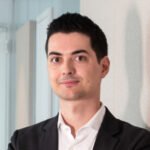SAP Customer Diehl Metering Implements Global One Finance Control Concept


The challenge for Diehl Metering, based in Ansbach, Franconia (322 million euros turnover, 1700 employees), was to meet the requirements of the Future Finance Group project on the one hand and to map the already implemented global matrix organization with seven national companies that had grown differently over time in the system on the other.
With a minimally invasive transformation approach and the standard software cbs ET, the new financial architecture was implemented in the ERP system in a future-oriented manner. The new general ledger was implemented, various charts of accounts and controlling areas were harmonized and the new asset accounting and ledger solution were also introduced. Diehl Metering now has a modern one-finance target structure that serves as a role model. The benefits are obvious: greater transparency, better control, lower costs and the safeguarding of long-term innovative capacity.
First One Finance, then S/4
In order to create global transparency and maintain its competitiveness, the Diehl Group decided to establish a new, modern management concept with Future Finance. The aim was to harmonize financial structures across the Group. The aim was to increase transparency at division level and achieve a globally uniform understanding. The aim was also to reduce planning expenditure and costs through integrated IT systems.
Those responsible at Diehl Metering, a subgroup of the Diehl Group, knew from the outset that the upcoming One Finance transformation had to be planned and implemented in line with the S/4 roadmap that was currently being developed. The company therefore approached the cbs experts at an early stage in order to benefit from their process and SAP expertise.
When discussing the concepts, they quickly came up with the solution of implementing One Finance and the S/4 changeover separately in order to keep the stress level for the entire organization as low as possible. "If we had done both in one go, it would probably have taken much longer. Now we already have the opportunity to reap the first rewards and can then move over to brownfield if necessary," explains Sigrid Heubeck, Head of Enterprise Resource Planning at Diehl Metering.
"In terms of processes, we didn't make any major changes as part of Future Finance; in the first step, we mainly harmonized basic finance structures in SAP ERP/ECC, so our colleagues were able to continue posting as before," says Heubeck. There were seven company codes with seven different controlling areas, which were all combined into one new controlling area. In this context, the cost centre structure, activity types and other controlling master data were standardized in order to lay the foundation for further steps to harmonize the individual companies.
A key part of this was the merger of three different charts of accounts into a single one: the chart of accounts for the Chinese, the French and the joint chart of accounts for the other Diehl Metering units. Only the local chart of accounts for France was retained.
In addition, the classic general ledger with the accounts solution was replaced by the new general ledger including the ledger solution. This enabled Diehl Metering to further streamline its chart of accounts and remove accounting-specific G/L accounts from the chart of accounts as far as possible. A total of four ledgers were introduced to map the accounting regulations relevant to Diehl Metering. At the same time, traditional asset accounting was replaced by the new asset accounting system and the asset classes were harmonized.
Relevant figures at a glance
The first benefits of Future Finance became apparent very quickly, for example in the follow-up projects. For example, Diehl was subsequently able to introduce the cost of sales method with functional areas. "We also had a roll-out to the USA immediately afterwards, which of course went much faster in Finance and Controlling because we didn't have to coordinate again," explains project manager Sigrid Heubeck. "We then introduced variance calculation for production orders for our Polish and Chinese companies, and that was actually an easy task because we already had everything in one controlling area and the customizing was already in place," says the ERP manager.
So there was a whole series of knock-on effects from which Diehl benefited from an IT perspective, but also from a departmental perspective, for example in controlling. These effects have noticeably accelerated the ongoing projects because certain requirements were already in place.
"It's a huge advantage for our reporting to now have all the relevant figures on one level, so I no longer have to compare apples with oranges, but can now really see everything at a glance," says Sigrid Heubeck. "Previously, the individual business units operated very autonomously. Everyone had their own chart of accounts and posted the way they wanted. Now we have also clearly mapped the reorganization of Diehl Metering in SAP," explains Heubeck.
Consolidated view
Each national subsidiary posts to the same account - this also makes it easier to report the results to the head office at the end of the month and financial year. "This gives us better transparency of our figures, i.e. target figures, actual figures, forecasts, etc., allowing us to react and plan much more quickly and agilely," emphasizes Sigrid Heubeck. "In this way, we have increased efficiency in finance and created a basis for future innovations. We are much better positioned for future projects and the use of new technologies," says the ERP manager.
The transformation was a complete success. Consolidation has simplified processes and increased transparency. The changeover with the help of the cbs Enterprise Transformer took place in a challenging big bang over a weekend, without any frictional losses.
"Looking back on this collaboration, the pragmatic approach in terms of the solution and the close exchange on an equal footing with cbs was the key to success. The decisive factor in the project was that we gave each other a lot of feedback. There were mistakes, there were detours, there was a need for discussion, but that is also normal. The approach was always very pragmatic. We always looked at things calmly and then decided together what to do next," Heubeck looks back. "At the beginning, cbs said that they always try to make the customer's problems their own task and to solve them, to make them their own goal. That's exactly what we did, so we always worked in a goal-oriented way," praises Heubeck.
One example was the HCM of the Polish company, which is active in Diehl Metering's ERP. Heubeck: "We only wanted to adapt the personnel master data, everything else was to be done by the Polish consultant. But then it quickly became complicated.
cbs then called in an expert from the HCM team and together we found a suitable solution," explains the Head of Applications.
Sigrid Heubeck knows: "The successful One Finance project has made an impression throughout the Group, we have really been noticed. The fact that we can now operate on an equal footing with all other divisions and are a pioneer in finance has been received very positively throughout the Diehl Group."
"We are highly satisfied with the professional system transformation and the expertise of cbs in the finance sector," summarizes the ERP manager.
Diehl is now prepared to tackle the S/4 Hana topic in a structured manner in the next step. The plan is to start preparing for S/4 now and switch to the new SAP world in 2024/25 as part of a brownfield conversion. "This will certainly be challenging, but with a strong partner at our side, we certainly have the chance to create real added value for the company," says Sigrid Heubeck.
Including SAP Analytics Cloud
At the same time, those responsible are continuing to optimize structures and processes in the finance environment. Following the cost of sales method, Group costing is also being introduced. And now the aim is to bring as much data as possible into the SAP Analytics Cloud (SAC) so that all areas of the company can report in a practically standardized way.







